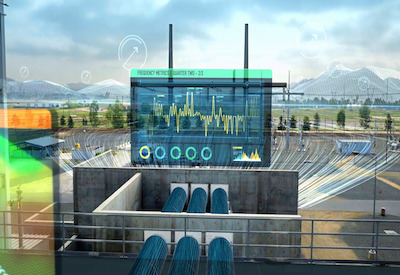Getting to Know Digital Electricity Cables

Nov 19, 2018
By Ron Tellas
As smart buildings rely on more high-power, long-reach applications, such as PONs (passive optical networks) and BASs (building automation systems), digital electricity cables are becoming a viable option to safely and reliably transmit power and data across long distances.
Relatively new to the market, however, there are a few things you should know about digital electricity cable technology.
1. It supports long transmission distances
With a low mutual capacitance of <50 pF per foot to maintain power-transfer speed, reliable power and data transfer across extended reaches is possible. This makes it ideal for large venues like airport terminals, convention centres, high-rise hotels, hospitals, stadiums and office towers.
2. It supplies safe power transmission
By transmitting “pulses” of DC power, digital electricity cables send energy and data across very long distances in a safe, efficient manner. Data-sensing transmitters and receivers are constantly monitoring line conditions to make sure power pulses are properly received.
If a problem is detected — like an exposed conductor being touched, or a wire being short circuited or incorrectly installed — power distribution stops immediately (within 0.003 seconds) to protect people and equipment. This makes the cable safe to touch, without the worry of dangerous electrical shock.
3. It allows for lower-cost networks
Even when transferring thousands of watts of power, digital electricity networks utilizing digital electricity cables can be installed at much lower costs than traditional networks. They don’t need conduit or armoured cabling, and don’t require an electrician’s time. Instead, a cable installer can used for installation (similar to how a traditional PoE cable would be installed).
4. It establishes better management and control
Digital electricity technology has inherent embedded data capabilities for energy management, monitoring and control. This means it can be used to remotely power and centrally back up systems like DAS remotes, mobile edge servers, PoE LED lighting systems, and IoT sensors.
5. It offers installation versatility and flexibility
With a stranded design, digital electricity cable can maintain flexibility so performance isn’t impacted during installation. It can be used in indoor (plenum and riser), outdoor and overhead/burial applications.
In Belden’s digital electricity cables, digital electricity technology is supplied by VoltServer. The transmitters and receivers are supplied by either VoltServer or JMA Wireless.
Digital electricity cable is available in either copper or hybrid copper/fibre.
Ron Tellas joined Belden in 2016 to help define the roadmap of technology and applications in the enterprise. Prior to this, he developed cables and connectivity for Panduit and Andrew Corp. Ron Tellas is a SME in RF design and Electromagnetic Propagation and has BSEE from Purdue University, a MSEE from IIT, and a MBA from Purdue University.
This article was first published online by Belden
Photo source: GE Reports




![Guide to the Canadian Electrical Code, Part 1[i] – A Road Map: Section 52 — Diagnostic imaging installations](https://electricalindustry.ca/wp-content/uploads/2022/11/Guide-CE-Code-2-768x432.png)





![Guide to the Canadian Electrical Code, Part 1[i] – A Road Map: Section 52 — Diagnostic imaging installations](https://electricalindustry.ca/wp-content/uploads/2022/11/Guide-CE-Code-2.png)






